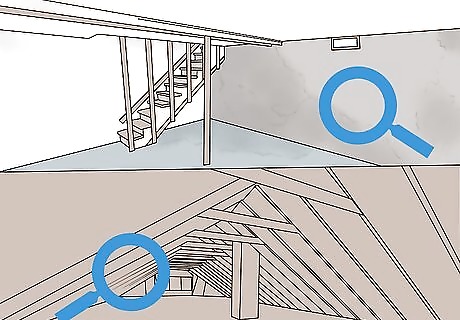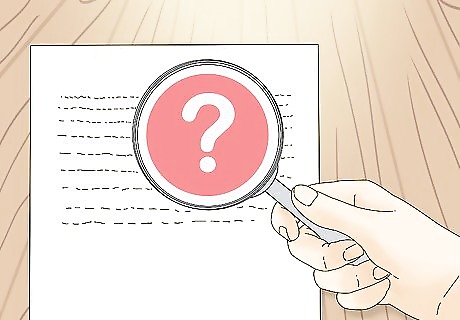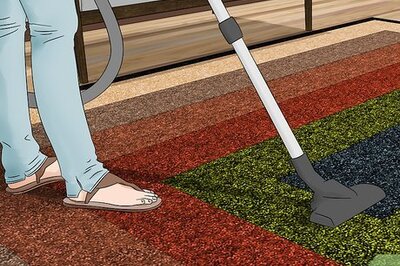
views
Looking for Treasure Nearby

Get a metal detector to help you find metal objects. When you get to your destination, turn on your metal detector and adjust your settings based on search radius. It is best to travel to spots that are infrequently visited, if possible. Walk in a straight line with your metal detector, rather than hovering it from side to side. When your metal detector finds something, it will light up and/or make a sound. Use a shovel or garden spade to dig where your detector finds treasure. Depending on the reading, the item may be several inches deep, so use care as you dig and keep an eye out for any shiny items. Use a metal detector to find things like coins and metal collectibles.

Investigate the strip of land between roads and sidewalks. Around many towns and cities, items are often dropped by passersby along the sidewalks. You can find things like coins, jewelry, or other small pocket items. Walk along these items with your metal detector to see what you can discover. If the road is very old, you may even find items from previous centuries, like an artillery uniform button from the War of 1812.

Search along old public parks or picnic grounds. Concentrate on overlooked sections of the park, such as overgrown areas and trails into and out of the parks. Use your metal detector to look for items around trees and large rocks, for instance. Parks and picnic spots are usually well visited, so there's no guarantee you'll find a treasure here.

Look around vacant lots where buildings used to be. Visit your local library, and ask the librarian for an old map of your area. Then, compare this map to current maps to find spots that were erect in the distant past. Visit the sites that remain undeveloped, and use your metal detector to see what you can find. You can use satellite images from Google Maps, for instance.

Visit old swimming holes or dried-up bodies of water. It is common for swimmers to lose small items when they are wading through the water. Items like coins and jewelry sink to the bottom. If the water is dried up, search along the bottom. If there is still some water in the swimming hole, search along the shore and near overgrown areas. You can find items like Native American artifacts and war memorabilia.
Searching Around Your House

Look in the basement, attic, and garage of your home. If you just recently moved into an old home or inherited a space from a relative, check in storage locations to see what you may find. Keep an eye out for any chests, drawers, or briefcases that may be used to contain other items. Search high in the rafters as well. For instance, sometimes people hide money or valuables in a suitcase and stash it in the attic.

Do a sweep of your backyard to see if there are any hidden gems. This is when you can break out the metal detector. You never know what kind of items were hidden throughout your yard or garden, such as coins or arrowheads. These items may be hidden inside of other small containers. Look for small depressions in your yard, and keep an eye out for any items poking above the surface. You can also find items buried under the edge of a walkway or driveway.

Check around your home for any hidden doors or compartments. While this may be less obvious, there may be secret areas hidden throughout your home. Search behind old wallpaper, under the staircase, or near the floorboards, for instance. You may have to get creative with where to look.

Inspect garbage and recycling bins to search for discarded treasure. As they say, “one man’s trash is another man’s treasure”. You never know what people are throwing away in the dumpster! If you live in a community or development, take a look for items at the top while you throw away your garbage. If you see something interesting or potentially valuable, remove it from the bin and take it home. Be sure to use a disinfectant cleaner to wipe down the item, as it was in the trash and could be ridden in germs. For instance, you could discover an old violin that is worth up to $50,000. Avoid trespassing on private property.

Investigate barns and sheds to see what may have been left behind. Buildings around the house are great places to search for treasure. Be sure to investigate high and low, and keep an eye out for loose bricks or boards. Oftentimes, these areas have loose floorboards where you can discover lost coin collections, gems, or gold. You can find a storage building full of random antiques, tools, or appliances, for instance. In addition, keep an eye out for scrap metal to sell or items to repurpose.
Traveling to Famous Locations

Search online to find information about famous buried treasure. Before you go digging out in the unknown, do some research to familiarize with historical buried treasure sites and excavations. Supposedly, there are many treasures buried throughout the world by famous outlaws or historians. Search for any progress others have made or any clues suggested online. For example, read up on Davey Jones’ Locker if you want to find a grand fortune. A Spanish ship sank in 1511, and onboard was nearly 600 tons of gold and 200 chests of diamonds, rubies, and emeralds. The ship has never been found, and it presumably is somewhere in the Strait of Malacca, between Sumatra and Malaysia.

Learn how to decipher clues and riddles. Some buried treasure is only found by completing math equations, finding clues, or solving puzzles. To find the treasure, some form of code must be broken. You can brush up on your math skills and research lost explorer treasure to help you crack the code. For instance, research Thomas J. Beale’s gold and silver deposit, which is said to be buried somewhere in the Blue Ridge Mountains.

Consider going diving to find items deep in the sea. There are many myths around buried treasure being lost at sea. Take a scuba diving lesson so you can explore these lost, unknown worlds. You can explore shipwrecks and the sunken city remains, for instance. For example, you can search for the treasure of Jean LaFitte. LaFitte was a French pirate who attacked merchant ships in the Gulf of Mexico. Supposedly, his treasure is buried somewhere in Lake Borge off the coast of New Orleans.

Travel to destinations claiming to have buried treasure on site. There are many destinations claiming to have a treasure. If you live in the vicinity of the site, you can drive there. If you want to travel to international destinations, consider flying or taking a boat. To find locations, search online based on the type of treasure you hope to find. For instance, you can travel to Little Bighorn to search for deposited gold. You can also collect pearls in the Mojave Desert. Travel to mines in order to find diamonds, emeralds, and rubies, for instance.



















Comments
0 comment